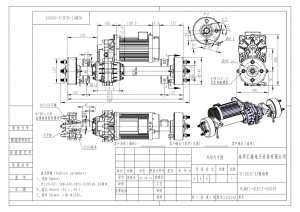If you own a Badboy lawn mower, you know it’s a powerful machine designed for heavy-duty work. With a powerful engine and durable construction, Badboy lawn mowers are designed to handle the toughest jobs. However, like any piece of equipment, it requires regular maintenance to ensure it operates optimally. An important maintenance task on your Badboy lawn mower is bleeding the transaxle. In this blog post, we’ll discuss the importance of bleeding your transaxle and provide a step-by-step guide on how to do it properly.
What is a transaxle?
Before we dive into the transaxle bleeding process, let’s first understand what a transaxle is and why it’s critical to the performance of your Badboy lawn mower. A transaxle is a combination of transmission and axle that transfers power from the engine to the wheels. It is an important component that allows the lawnmower to move forward and backward easily. Without a properly functioning transaxle, your lawn mower’s performance will be affected and it may even become inoperable.
Why Transaxle Bleeding Is Important
Bleeding the transaxle is an important maintenance task to ensure proper functioning of the hydraulic system. Over time, air can become trapped within the transaxle, causing hydraulic pressure loss and reduced performance. Bleeding the transaxle helps remove trapped air and ensures the hydraulic system remains in optimal condition. This is a relatively simple task, but one that can have a significant impact on the overall performance and lifespan of your Badboy lawn mower.
Step-by-Step Guide to Transaxle Bleeding
Now that we understand the importance of transaxle bleeding, let’s take a step-by-step look at how to do it properly.
Step 1: Gather the necessary tools
Before you begin, make sure you have all the necessary tools and materials on hand. You will need a socket wrench, a container to collect the hydraulic fluid, a drain pan, and a new filter and replacement hydraulic fluid.
Step 2: Position the lawnmower
Park the mower on a flat, level surface to ensure stability during deflation. When you operate the transaxle, engage the parking brake to prevent the mower from moving.
Step 3: Drain the hydraulic oil
Locate the transaxle drain plug and use a socket wrench to loosen it. Place the drain pan under the plug to catch the drained hydraulic oil. Let the liquid drain completely before proceeding to the next step.
Step 4: Replace the filter
After draining the hydraulic fluid, locate the filter on the transaxle and remove it. The filter must be replaced during the bleeding process to ensure that the hydraulic system is not affected by contaminants. Install the new filter according to the manufacturer’s instructions.
Step 5: Refill the Transaxle
After replacing the filter, the transaxle needs to be refilled with fresh hydraulic oil. Use the appropriate type of fluid recommended by Badboy and fill the transaxle to the appropriate level. Be sure to check the owner’s manual for correct specifications.
Step 6: Bleeding the Transaxle
Now comes the most critical step – bleeding the transaxle. Start by positioning the bleeder valve on the transaxle. Connect the hose to the bleeder valve and place the other end into a container to collect the hydraulic oil.
Next, ask a friend or coworker to assist you with the bleeding process. Instruct them to slowly depress the mower’s drive pedal while opening the bleeder valve. When the pedal is depressed, air and old hydraulic fluid will be squeezed out through the hose and into the container. Close the bleeder valve before releasing the pedal to prevent air from re-entering the system.
Repeat this process several times until all air bubbles are removed from the hydraulic system and clean fluid is flowing through the hoses. This ensures that the transaxle is properly bled and that the hydraulic system is free of air.
Step 7: Test Performance
Once the transaxle is deflated, it is necessary to test the lawn mower’s performance to make sure everything is operating properly. Depress the drive pedal and watch the mower react. If everything is working properly, you should notice improved performance and smooth operation.
By following these simple steps, you can effectively drain your Badboy lawn mower’s transaxle and maintain optimal performance of its hydraulic system.
final thoughts
Proper maintenance is essential to keeping your Badboy lawn mower running smoothly and efficiently. Transaxle bleeding is an important maintenance task that should be performed regularly to ensure that the hydraulic system remains in optimal condition. By following the step-by-step guide outlined in this blog post, you can effectively bleed your transaxle and maintain the performance and longevity of your Badboy lawn mower. Remember to check your owner’s manual for specific instructions and recommended maintenance intervals. With regular maintenance and attention, your Badboy lawn mower will continue to handle the toughest jobs with ease.
Post time: Jan-22-2024


